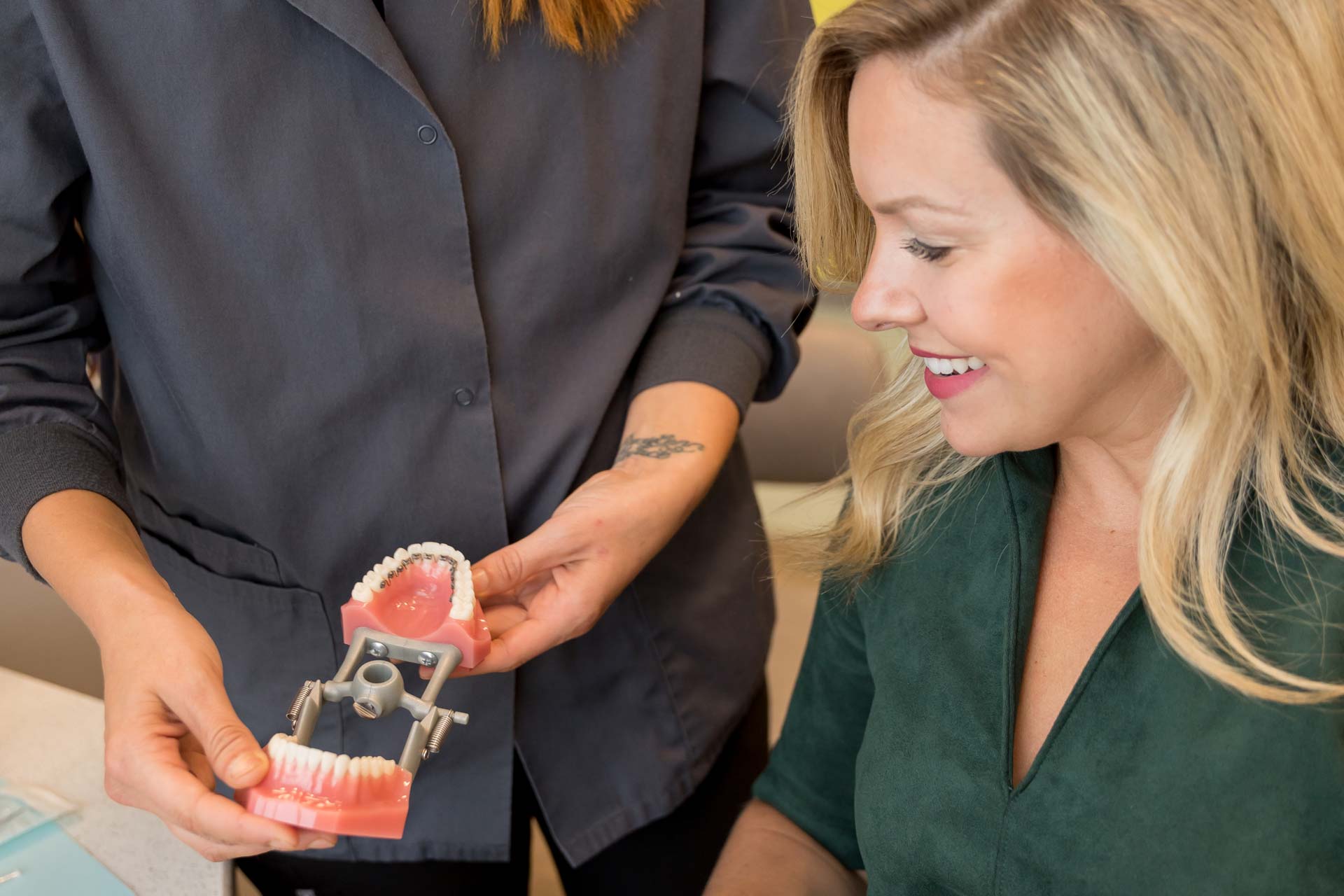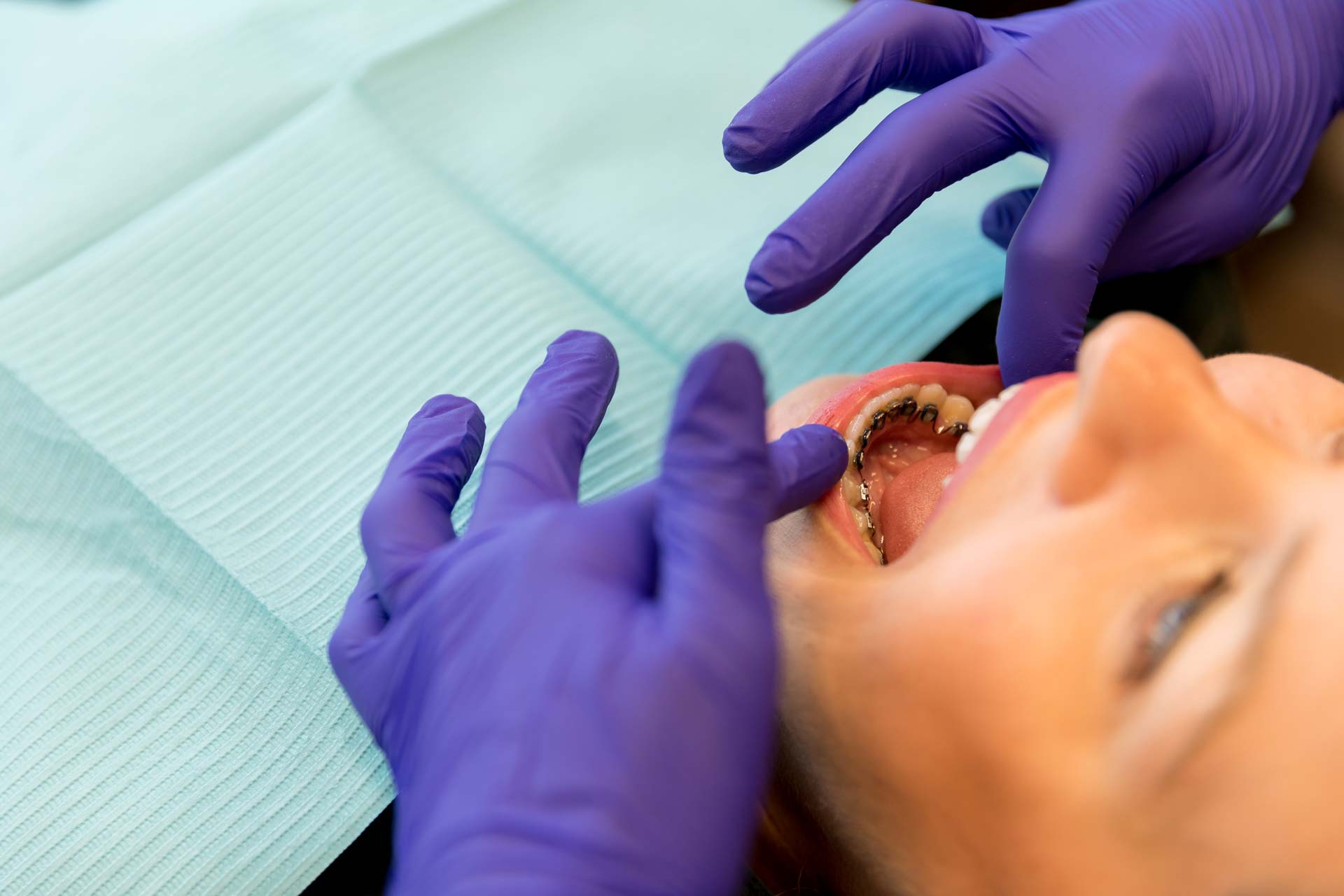InBrace In Virginia For Teens & Adults
Start Smiling Sooner
What Is InBrace?
InBrace is a solution for straightening teeth and resolving misalignments that are hidden behind the teeth.
Our InBrace Smartwire® works like autopilot. The Smartwire is programmed with Gentleforce® technology from advanced shape memory alloy to gently move your teeth into place. This means no monthly tightenings or tray changes. You can also eat and drink whatever you like without worrying about food getting trapped or hurting your appliance.
InBrace utilizes a Smartwire system, which is tailored to your mouth and designed to apply a slight pressure to move the teeth into alignment, according to the treatment plan designed by Dr. Horsey.
With InBrace from Horsey Orthodontics, there are no painful monthly tightening, no trays to remove, and no visible wires–just stunning results. Contact us today to request a free consultation for InBrace treatment in Midlothian, Henrico, and Richmond, VA.
How InBrace Works
InBrace can be used to treat all types of malocclusions, ranging from simple spacing and alignment issues to more complex cases. The treatment process is simple, and without regular adjustment appointments or aligner changes, you can work towards a straighter smile without any interruptions!
- Step 1 – Your InBrace Toothprint is scanned by our team to create a 3D image of the inside of your mouth. Your individual Toothprint is used by Dr. Horsey to personalize your Smartwire for precise results.
- Step 2 – Once your appliance has been designed, our team will place your Smartwire behind your teeth.
- Step 3 – Like autopilot, you don’t have to do anything. The Smartwire uses gentle pressure to continuously move teeth throughout treatment, so you just keep doing you and we’ll handle the fine-tuned details.
Benefits of InBrace
Discreet
When it comes to your orthodontic treatment, the more discreet, the better. That’s why so many patients love InBrace. The appliance is placed behind the teeth, so no one can see your appliance at work, even up close.
Faster Results
Since InBrace is hidden behind the teeth, you can show off your new smile without worrying about showing your appliance too. You’ll even start to see results in as little as two weeks.
Convenient
With InBrace treatment at Horsey Orthodontics, you don’t need to worry about adjusting your diet or oral hygiene habits. With InBrace, you’re free to love life as usual while the appliance does all the work for you. Plus, InBrace Smartwire self-adjusts, meaning you won’t have to take time away from school or work to visit the orthodontist.
InBrace FAQ
As with most types of braces, the length of treatment will depend on the severity of your situation. Overall, treatment with InBrace typically lasts between 6 and 18 months. Due to some of the improvements, such as the Smartwire, InBrace tends to be more efficient, even in severe cases, than other forms of braces.
As with most types of braces, the length of treatment will depend on the severity of your situation. Overall, treatment with InBrace typically lasts between 6 and 18 months. Due to some of the improvements, such as the Smartwire, InBrace tends to be more efficient, even in severe cases, than other forms of braces.
People with moderate to severe cases of teeth misalignment and bite issues may benefit greatly from InBrace. It’s also an excellent option for people who desire a straighter, more beautiful smile but don’t want to stand out by wearing metal braces. The easiest way to find out if you qualify for InBrace is to schedule a consultation with Dr. Horsey at our office. To determine whether or not InBrace is the best option for you, he can do an examination and take X-rays. To schedule your free consultation, please contact us right away.
As with other forms of braces, you are going to have to avoid certain foods in order to protect your appliance and prevent foods from getting stuck in them. This includes foods that are hard, sticky, or chewy. These types of foods tend to get stuck in the braces and loosen or damage the appliance. But there are still plenty of soft, enjoyable foods you can eat.
The intention behind developing InBrace was for it to be as unobtrusive as possible. Since it will be out of sight behind your teeth, there shouldn’t be a change in the way you speak. As you become adjusted to the device, you should notice an improvement in the way you speak. However, please let us know if you notice any lingering changes to your speech after beginning InBrace treatment.


